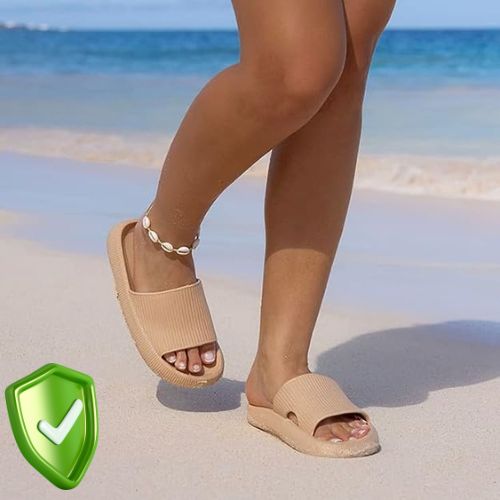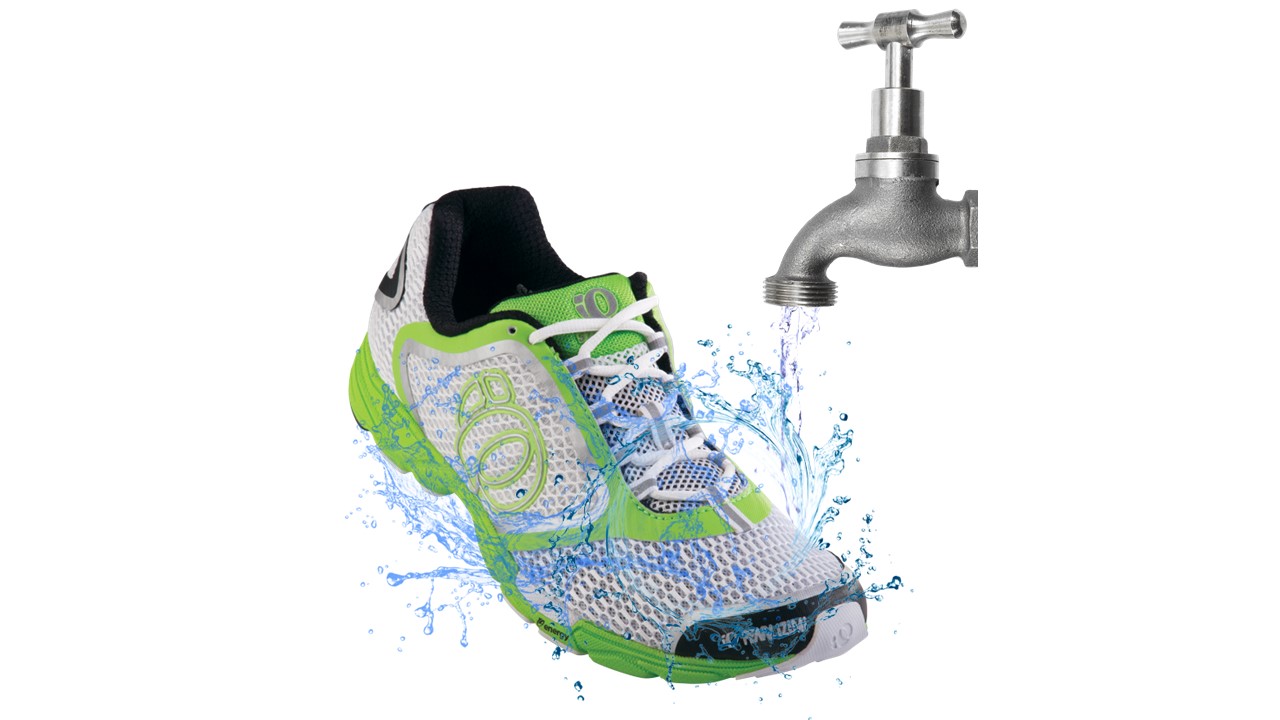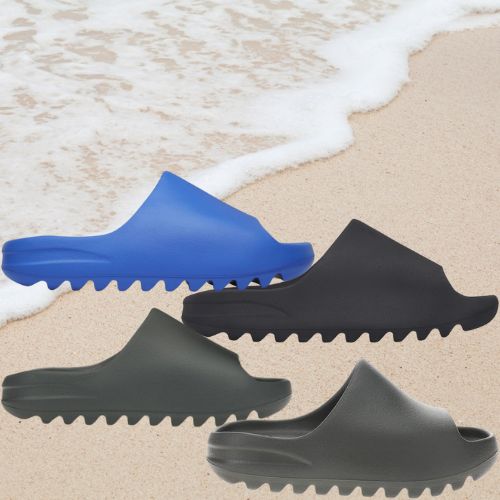How To Get Sand Out Of Water Shoes
Looking for how to get sand out of water shoes? Are you tired of getting sand stuck in your water shoes every time you hit the beach? You’re not alone! According to research, beach sand supports a lot of microbes such as fungi, bacteria and viruses that can pose health risks to your feet.
Also, more than 70% of beachgoers experience the frustrating problem of sand getting trapped in their water shoes. Not only is it annoying, but it can also be uncomfortable and even painful. Fortunately, there are several effective ways to get rid of sand from your water shoes.
In this article, we’ll explore the most effective methods for getting sand out of water shoes and provide you with some tips and tricks to keep your shoes sand-free. Whether you’re an avid beachgoer or just looking to keep your water shoes clean and comfortable, this article has got you covered.
How To Get Sand Out Of Water Shoes
here are some step-by-step methods to get sand out of water shoes:
Shaking Method
- Step 1: Take off your water shoes and hold them by the soles.
- Step 2: Vigorously shake the shoes up and down, side to side, and back and forth to dislodge any loose sand.
- Step 3: Turn the shoes upside down and tap them on a hard surface to shake out any remaining sand.
Brushing Method
- Step 1: Take off your water shoes and use a soft-bristled brush to brush off any sand on the shoes.
- Step 2: Brush the shoes in all directions, making sure to get into any crevices or hard-to-reach areas.
- Step 3: Use a dry cloth to wipe off any remaining sand.
Rinsing Method
- Step 1: Take off your water shoes and rinse them under a faucet or with a hose.
- Step 2: Use your fingers to rub off any stubborn sand particles.
- Step 3: Shake off any excess water and let the shoes air dry.
Soaking Method
- Step 1: Fill a bucket with warm water and add a cup of white vinegar or baking soda.
- Step 2: Place your water shoes in the solution and let them soak for 15-20 minutes.
- Step 3: Remove the shoes from the solution and rinse them thoroughly with water.
- Step 4: Shake off any excess water and let the shoes air dry.
Vacuum Method
- Step 1: Take off your water shoes and use a handheld vacuum cleaner with a brush attachment to suction out any sand.
- Step 2: Move the brush attachment in all directions, making sure to get into any crevices or hard-to-reach areas.
- Step 3: Empty the vacuum cleaner canister and repeat as necessary until all sand is removed.
Precautions To Take When Removing Sand
When removing sand from your water shoes, it’s important to take certain safety precautions to avoid injuries or discomfort. Here are some precautions you should take:
- Wear gloves: If you have sensitive skin or if the sand is particularly coarse, it’s a good idea to wear gloves when removing sand from your water shoes. This can help prevent scratches, cuts, or other injuries to your hands.
- Remove sand gently: Use a soft brush or your fingers to gently remove sand from your water shoes. Avoid using abrasive materials or tools that could damage the shoes or cause discomfort to your feet.
- Shake out the shoes: Before removing sand from your water shoes, shake them out vigorously to remove as much sand as possible. This can help minimize the amount of sand you need to remove manually.
- Check for any debris: After removing sand from your water shoes, check for any other debris that may be trapped inside, such as small rocks or shells. Remove these carefully to avoid injury or discomfort.
Do’s And Don’ts Of Cleaning Water Shoes
Cleaning water shoes is an important part of their maintenance, but it’s important to follow some guidelines to avoid damaging them. Here are some do’s and don’ts of cleaning water shoes:
Do’s
- Use mild soap and water: Use a mild soap and water solution to clean your water shoes. This can help remove dirt and debris without damaging the material or the structure of the shoes.
- Rinse thoroughly: After cleaning your water shoes, make sure to rinse them thoroughly with clean water to remove any soap residue.
- Air dry: Allow your water shoes to air dry completely before wearing them again. Avoid drying them in direct sunlight or using heat sources such as a hairdryer, as this can damage the shoes.
- Clean regularly: Clean your water shoes regularly to prevent dirt and debris from building up and causing damage or odors.
- Store properly: Store your water shoes in a cool, dry place away from direct sunlight to prevent damage or discoloration.
Don’ts
- Do not use bleach: Avoid using bleach or other harsh chemicals when cleaning your water shoes, as this can damage the material and cause discoloration.
- Do not machine wash: Do not machine wash your water shoes, as this can cause damage to the shoes and the machine. Only use gentle speed if the manufacturer of the shoe recommends machine wash.
- Do not dry in direct sunlight: Avoid drying your water shoes in direct sunlight or using heat sources such as a hairdryer, as this can cause damage to the shoes.
- Do not use abrasive materials: Avoid using abrasive materials such as a hard-bristled brush or scouring pad to clean your water shoes, as this can cause damage to the material.
Types Of Water Shoes To Wear
There are several types of water shoes available in the market, each designed for different water activities and environments. Here’s an overview of the most common types:
- Aqua Socks: Aqua socks are lightweight, slip-on shoes that are great for walking on sandy beaches and in shallow water. They provide minimal protection but are comfortable and easy to wear.
- Water Sandals: Water sandals are more protective than aqua socks and offer better traction. They feature adjustable straps and can be worn in deeper water.
- Water Shoes: Water shoes are more substantial than aqua socks and water sandals and provide better support and protection. They are designed for a variety of water activities such as swimming, kayaking, and rafting.
- Surf Shoes: Surf shoes are designed for surfing and feature a thin sole for better board feel and grip. They are made of neoprene material and provide insulation to keep feet warm in cold water.
- Dive Boots: Dive boots are made of thick neoprene and provide insulation and protection for diving in cold water. They are designed to be worn with fins and have a sturdy sole for grip on slippery surfaces.
- Canyoneering Shoes: Canyoneering shoes are designed for hiking and exploring canyons and waterfalls. They are durable, protective, and offer excellent traction on wet and slippery surfaces.
When choosing water shoes, consider the activity you will be doing and the environment you will be in. Look for shoes with good traction, sturdy soles, and proper fit for maximum comfort and protection.
By selecting the right type of water shoes, you can enhance your water activities and stay safe and comfortable in and out of the water.
The Best Water Shoes For Water Activities
If you are looking for the best water shoes for water activities, here are some of the bests you can count on:
Product Image | Product Name | Key Features | Rating | Price |
| ||||
| ||||
| ||||
| ||||
| ||||
| ||||
| ||||
| ||||
| ||||
|
Common Problems With Water Shoes
While water shoes offer numerous benefits, there are also some common problems that people may encounter when wearing them. Here are some of the most common issues with water shoes and how to address them:
1. Sand Getting Trapped In The Shoes
One of the most common problems with water shoes is that sand and small rocks can get trapped inside the shoes, causing discomfort and irritation.
To prevent this, shake out your water shoes frequently while wearing them, or rinse them with water to remove any debris that may have gotten inside.
2. Shoes Not Fitting Well
Another common issue with water shoes is that they may not fit well, causing discomfort and even blisters. To avoid this, make sure to try on water shoes before purchasing them and choose a size that fits snugly but not too tight.
Look for shoes with adjustable straps or laces that can be tightened or loosened to achieve the perfect fit.
3. Shoes Not Drying Quickly
Water shoes can take longer to dry than other types of shoes, especially if they are made of thick materials like neoprene.
To help them dry more quickly, remove the insoles and leave the shoes in a well-ventilated area to air dry. You can also stuff the shoes with newspaper or a towel to absorb excess moisture.
4. Odor
Water shoes can develop an unpleasant odor over time due to bacteria and fungi that thrive in damp environments. To prevent this, wash your water shoes regularly with mild soap and water, and allow them to dry completely before wearing them again.
You can also use shoe deodorizers, white vinegar or sprinkle baking soda inside the shoes to help eliminate any odors.
Maintenance Tips To Help You Care For Your Water Shoes So They Last Longer
Water shoes are essential gear for water activities, and proper maintenance can help keep them in good condition and extend their lifespan. Here are some maintenance tips to help you take care of your water shoes:
- Rinse after each use: Rinse your water shoes thoroughly with clean water after each use to remove sand, dirt, and salt. This will prevent the accumulation of debris and reduce the risk of damage or odor.
- Air dry completely: Allow your water shoes to air dry completely before storing them. Avoid drying them in direct sunlight or using heat sources, as this can damage the material and cause discoloration.
- Clean regularly: Clean your water shoes regularly using a mild soap and water solution and a soft brush. Avoid using harsh chemicals or abrasive materials that can damage the shoe’s material.
- Store properly: Store your water shoes properly in a cool, dry place away from heat sources. Avoid storing them in a damp or humid environment, as this can lead to mold or mildew growth.
- Replace worn-out shoes: Monitor the wear and tear of your water shoes and replace them when necessary. Worn-out shoes can cause discomfort and reduce the level of protection, which can lead to injuries.
Common Mistakes People Make When Trying To Get The Sand Out Of Water Shoes
Here are some common mistakes people make when trying to get the sand out of water shoes:
- Not Rinsing Immediately: Failing to rinse water shoes promptly after use allows sand to stick and harden, making it more challenging to remove later.
- Shoving the sand down into the shoe: This will only make the problem worse. The sand will get compacted and harder to remove.
- Skipping the Shake: Many people forget to give their water shoes a good shake after rinsing, which can help dislodge loose sand particles before they dry.
- Using Harsh Cleaning Agents: Some individuals resort to using harsh chemicals or bleach to clean their water shoes, which can damage the materials and reduce their lifespan. This can also be harmful to the environment.
- Neglecting Insoles: People often forget to clean or remove the insoles from their water shoes. These can accumulate sand and become breeding grounds for odor-causing bacteria.
- Not Drying Thoroughly: Failing to dry water shoes properly after cleaning or use can lead to mold growth and unpleasant odors. Proper drying is essential.
- Storing Wet Shoes: Storing water shoes when they are still damp can promote mold and mildew growth. It’s important to ensure they are completely dry before storing them.
- Overlooking Seams and Crevices: Sand can hide in seams, crevices, and grooves, and people often forget to clean these areas thoroughly. Using a brush or toothbrush can help with this.
- Not Checking for Damage: Ignoring minor damage, such as small tears or loose stitching, can lead to more significant issues over time. Regular inspections can prevent this.
- Ignoring Odor: Neglecting to address odor problems can result in unpleasant experiences. There are various methods to eliminate odors effectively.
- Using Hot Water: Hot water can damage certain materials used in water shoes, so it’s essential to avoid using hot water for cleaning.
- Neglecting Preventive Measures: Some people forget that prevention is key to keeping sand out of water shoes. Using gaiters, avoiding sandy areas, or using mesh bags for storage can help prevent sand buildup.
- Not Following Manufacturer Guidelines: Failing to follow the manufacturer’s recommendations for cleaning and care can lead to improper maintenance and potentially reduce the lifespan of the shoes.
- Being Too Rough: Using abrasive cleaning methods or being too rough with the shoes can damage the fabric or sole. Gentle cleaning is usually more effective.
How To Prevent Sand Buildup In Water Shoes
Preventing sand buildup in water shoes is essential for maintaining comfort and extending the life of the footwear. Here are some preventive measures that can help minimize the amount of sand that gets into water shoes:
- Choose Tight-Fitting Shoes: Opt for water shoes that fit snugly around your feet. Loose-fitting shoes are more likely to allow sand to enter. Ensure a proper fit to minimize the gaps where sand can infiltrate.
- Wear High-Cut Styles: Consider high-cut water shoes or boots that provide more coverage over your ankles. This can help prevent sand from entering the shoes through the top.
- Use Mesh Water Shoes: Some water shoes are designed with mesh uppers that allow water to flow freely while keeping sand out. Look for shoes with tight-knit mesh to reduce sand infiltration.
- Rinse Feet Before Wearing: Before putting on your water shoes, rinse your feet thoroughly to remove any sand or debris. This can prevent sand from transferring into the shoes.
- Avoid Sand-Clogged Areas: Be mindful of the terrain you are entering. Avoid areas with loose, dry sand, or opt for different footwear in such conditions. Stick to more solid, wet sand when possible.
- Shake Feet Periodically: While in the water or on the beach, periodically lift your feet and give them a good shake to dislodge any sand that may have accumulated inside your shoes.
- Tighten Straps and Laces: If your water shoes have adjustable straps or laces, make sure they are snugly fastened to minimize openings where sand can enter.
- Regular Cleaning: Develop a routine of cleaning your water shoes after each use. Rinse them thoroughly and remove any sand before it has a chance to dry and become difficult to remove.
- Keep Sandals Dry: If you are using water sandals, make sure they stay dry when not in use. Wet sandals can attract sand, making it harder to put them on comfortably.
- Avoid Burying Feet: When sitting on the beach, avoid burying your feet in the sand as this can lead to sand entering your shoes. Use a towel or beach chair to elevate your feet.
The Bottom Line
That is how to get sand out of water shoes. Water shoes are an essential piece of gear for anyone engaging in water activities. With proper care and maintenance, water shoes can last longer and provide maximum protection and comfort.
Whether you’re swimming, kayaking, or snorkeling, having a pair of high-quality water shoes can enhance your overall experience and keep you safe. Invest in a pair today and enjoy your next water adventure to the fullest!













